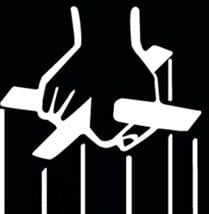 As a Reformed (Presbyterian) Evangelical I understood that heterodoxy was anything that fell out of line with the essentials as prescribed in the Confessions of the Reformed tradition. Aside from doctrines like the Trinity, dual nature of Christ, and the primacy of Scripture there were other doctrines that fit into this version of orthodoxy. These are typically called TULIP – Total depravity, Unconditional election, Limited atonement, Irresistible grace, and Perseverance of the saints. At the core of these doctrines is God’s sovereignty and justice. That’s not even close to the intricacies of the kit and kaboodle so let’s stay on focus.
As a Reformed (Presbyterian) Evangelical I understood that heterodoxy was anything that fell out of line with the essentials as prescribed in the Confessions of the Reformed tradition. Aside from doctrines like the Trinity, dual nature of Christ, and the primacy of Scripture there were other doctrines that fit into this version of orthodoxy. These are typically called TULIP – Total depravity, Unconditional election, Limited atonement, Irresistible grace, and Perseverance of the saints. At the core of these doctrines is God’s sovereignty and justice. That’s not even close to the intricacies of the kit and kaboodle so let’s stay on focus.
Eastern Orthodoxy basically rejects the entire system. The core difference is synergy. We work out salvation by cooperating with God. How this works is again more complicated but the very suggestion that we can cooperate with God in bringing about our salvation goes against what I learned and believed early on in my faith journey.
In Calvinism I don’t do anything in my salvation – God does all the work for me. In Eastern Orthodoxy God has done the work to open the door of salvation and it’s up to me to choose if I want to accept His grace by walking through it or not. Add to this that God wants every human being to accept His grace and not turn away and a different picture of who God is emerges. However, I bear the responsibility for the consequences of what I do in relation to God in preparation for standing in God’s presence.
My conundrum was what to do with two traditions that had such very different ideas about how God relates to us and acts in the world with us. Orthodoxy literally means correct teaching and correct worship. The teaching is very different and the worship couldn’t be less alike. If it weren’t for the basic agreement on most of the Nicene Creed, these might look like two totally different religions. There are many other differences too that I may touch upon with future posts. The point here is to highlight just how different one orthodoxy is from another.
literally means correct teaching and correct worship. The teaching is very different and the worship couldn’t be less alike. If it weren’t for the basic agreement on most of the Nicene Creed, these might look like two totally different religions. There are many other differences too that I may touch upon with future posts. The point here is to highlight just how different one orthodoxy is from another.
A new website opened up today that might help answer some of these and many other questions. I have a sneaking suspicion that many people in the West, especially of the Reformed, Lutheran, and Baptist flavors, haven’t been exposed to much of what is happening in Eastern Orthodoxy. Anglicans, Methodists, and Catholics at least share some common language.
This weblog project, Orthodoxy and Heterodoxy, is dedicated to the ongoing pursuit of these great questions, most especially in terms of how different theologies relate to and critique one another. Theology and doctrine aren’t the mealy-mouthed meanderings of professors in seminaries and universities. They’re the how-to manual for mystical union with the divine, for properly living this life and getting into the next in one piece, and for seeing and experiencing the deep meaning present in every person, every tree, every rock and every sub-atomic particle. If you follow the how-to manual in the right way, you get the right results. If you follow it in the wrong way, or you follow some other manual, then you get different results.
This looks like a worthy and exciting project and I hope that it will provoke useful discussion!











